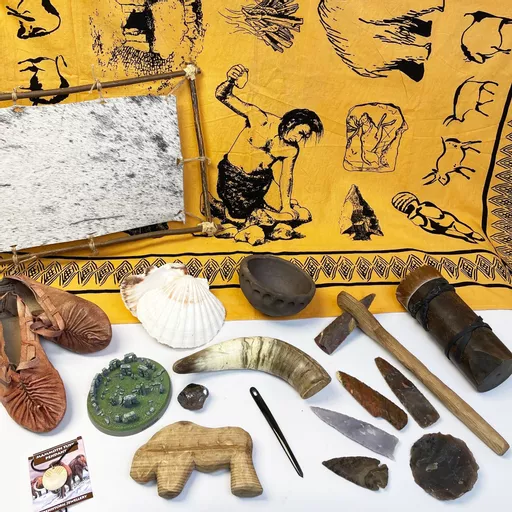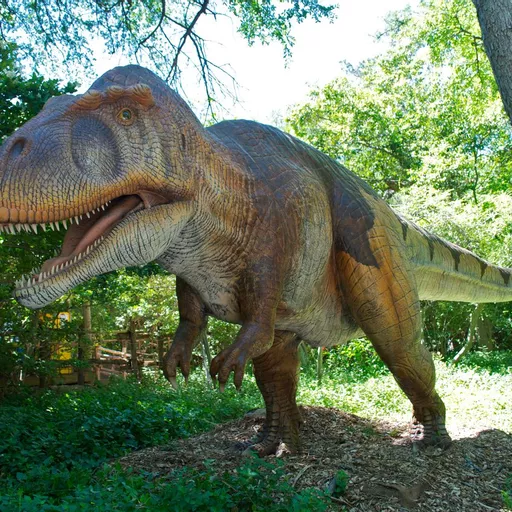Teaching the Stone Age can be a fascinating experience for primary school children, especially when they can see and touch artefacts from the era. Using real or replica artefacts brings history to life and helps children understand how early humans lived, worked, and survived. Here are the top ten artefacts that can make Stone Age lessons engaging and educational.
1. Flint Tools
Flint tools were essential for survival in the Stone Age. Early humans used flint to create sharp cutting tools, such as hand axes, scrapers, and arrowheads. These tools were used for hunting, skinning animals, and cutting wood. By examining flint tools, children can learn about early craftsmanship and the importance of tool-making in human evolution.
Activity Idea:
2. Animal Bones and Antlers
Early humans used animal bones and antlers to create tools, weapons, and ornaments. These materials were crucial for survival, as they were used to make needles for sewing, fish hooks, and even spear tips.
Activity Idea:




3. Stone Age Pottery
Although the Stone Age is often associated with rough tools, people also made pottery towards the later part of the era. Early pottery was handmade and used for cooking, storage, and even rituals. Examining pottery shards can teach children about early art and technology.
Activity Idea:
4. Cave Paintings and Engraved Stones
Cave paintings give us a glimpse into the minds of Stone Age people. These paintings, often depicting animals and hunting scenes, were an early form of storytelling and communication. Engraved stones with symbols or patterns also provide insight into early artistic expression.
Activity Idea:




5. Replica Stone Age Jewellery
Early humans made jewellery from shells, bones, and beads. These items were likely worn for decoration, status, or spiritual reasons. Examining Stone Age jewellery helps children understand that people have always expressed themselves through personal adornments.
Activity Idea:
6. Wooden Pots with Skin Lids
Stone Age people made simple containers from wood, often covering them with animal skins to store food and liquids. These early containers were essential for survival, helping to transport water and preserve food.
Activity Idea:
-
Discuss with children how different materials were used for making storage containers before metal or ceramic pots existed.
-
Let children create their own mini-containers using natural materials like bark and fabric.
7. Scallop Shells
Scallop shells were used for various purposes, including as tools for scraping, as containers, and even as ornaments. These items give insight into how early humans utilized natural resources efficiently.
Activity Idea:
8. Flint Scrapers
Flint scrapers were used for processing animal hides, cutting meat, and shaping wood. These tools were crucial for making clothing and shelters.
Activity Idea:




9. Stone Axes
Stone axes were powerful tools used for cutting down trees, shaping wood, and even in hunting. These heavy-duty tools marked significant advancements in early human technology.
Activity Idea:
10. Charred Food Remains
Archaeologists have discovered charred food remains from the Stone Age, showing that people cooked meat and plants over fire. Studying food remains helps us understand early diets and cooking methods.
Activity Idea:
-
Discuss with children what types of food Stone Age people ate and how they prepared it.
-
Have a simple ‘Stone Age feast’ using fruits, nuts, and cooked meat to give children a taste of prehistoric life.
Conclusion
Using artefacts to teach the Stone Age brings history to life and allows children to explore the past in an interactive way. Whether through handling flint tools, creating cave paintings, or making simple pottery, these artefacts help children connect with the lives of early humans. By making lessons hands-on and immersive, teachers can spark curiosity and a love for history in their students.






















